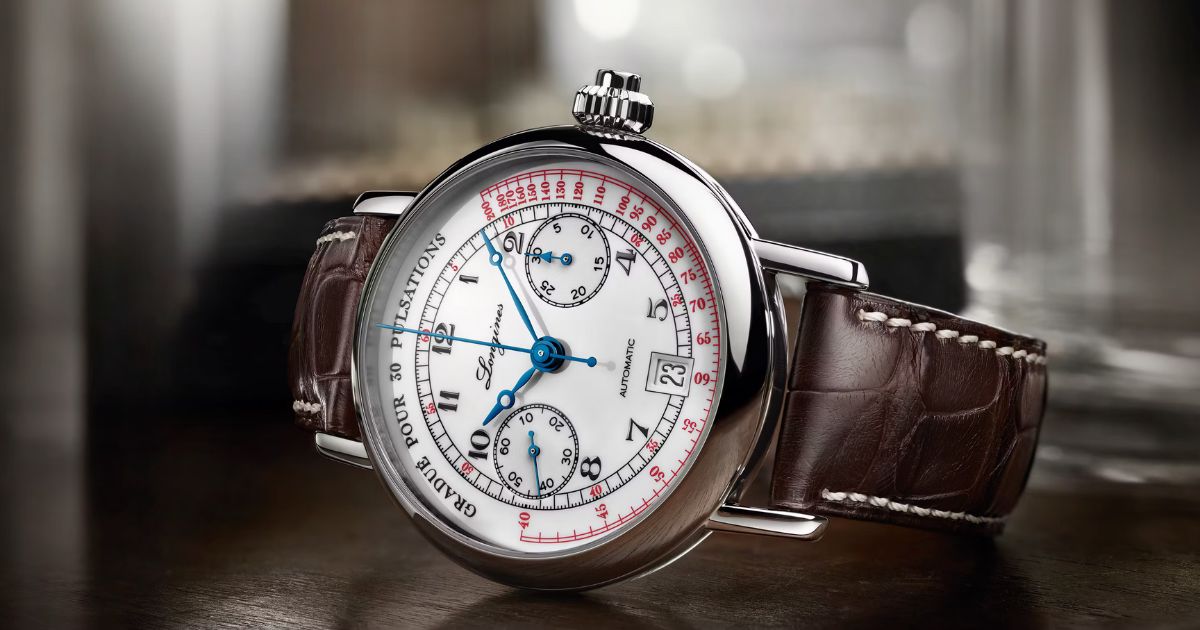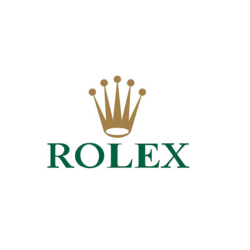Our Magazine
Tachymeter, Telemeter, Pulsometer: Decoding the Chronograph’s Dials

Welcome back, horology enthusiasts. Today, we’re diving deep into one of the most visually captivating and yet frequently misunderstood aspects of mechanical watchmaking: the calibrated scales that adorn the bezels and dials of our beloved chronographs.
We often admire a chronograph for its symphony of start, stop, and return actions—a dance of mechanical precision. But the scales that ring the dial are where this precision translates into purpose. They are the vestiges of a time when watches were tools for professionals, scientists, and adventurers. They transform a simple time-measuring device into a portable computer for the wrist.
So, let’s pull back the curtain on the three most common scales: the Tachymeter, Telemeter, and Pulsometer.
The Ubiquitous Workhorse: The Tachymeter
If you own a chronograph, chances are you’re familiar with the Tachymeter. It’s the most common scale, often found on the bezel of sporty and racing-inspired timepieces. Its primary function is to measure speed based on travel time.
How it Works:
The principle is simple. The tachymeter scale is calibrated to measure the time it takes to cover a fixed distance—almost always 1 kilometer or 1 mile. To use it, you start the chronograph as you pass a starting point (like a mile marker on a highway) and stop it as you pass the finish point. The chronograph seconds hand will point to a number on the tachymeter scale, which indicates your average speed in units per hour (km/h or mph).
For example, if it takes you 45 seconds to cover 1 mile, the seconds hand will point to 80 on the tachymeter scale, meaning you were traveling at an average speed of 80 mph.
The Mathematics:
The scale is calculated using the formula: T = 3600 / t (where T is the tachymeter value and t is the measured time in seconds). If t = 45 seconds, then T = 3600 / 45 = 80. The “3600” is the number of seconds in an hour, converting your seconds-per-unit measurement into units-per-hour.
Beyond the Road:
While synonymous with speed, a tachymeter is incredibly versatile. It can measure any hourly rate. How many units can a factory produce in an hour? Start the chronograph when one unit is completed, stop it at the next, and read the hourly production rate. It’s a testament to the ingenious, analog problem-solving embedded in these mechanical marvels.
A Key Limitation: The tachymeter only works for events that last approximately 7.2 to 60 seconds. Any shorter, and the event is too quick; any longer, and the hand has completed a full rotation, making the reading invalid.
The Doctor's Companion: The Pulsometer
Stepping from the racetrack to the clinic, we find the Pulsometer (or Pulsations Scale). This is a scale designed for a very specific, life-saving purpose: measuring a patient’s heart rate.
In an era before digital pulse oximeters, a doctor’s watch was an essential diagnostic tool. The pulsometer allowed for a quick and accurate reading without the need for complex mental calculations.
How it Works:
A pulsometer is typically marked with a base number, most commonly “Gradué pour 30 pulsations” (calibrated for 30 pulsations). The doctor would start the chronograph and count the patient’s heartbeats. Upon reaching the 30th beat, they would stop the chronograph. The seconds hand would then point directly to the heart rate in beats per minute (BPM).
The Mathematics:
The formula here is: BPM = (Number of pulsations / measured time in seconds) * 60.
By standardizing the number of pulsations to 30, the scale is pre-calculated. If it takes 20 seconds for 30 beats, the BPM is (30/20)*60 = 90 BPM. The scale does this math for you, instantly.
The Romanticism of the Pulsometer:
There is an undeniable old-world charm to a pulsometer. It speaks of a hands-on, intimate form of medicine. Today, watches featuring this complication often have a classical, “doctor’s watch” aesthetic, with elegant, legible scales that harken back to a golden age of medicine. It’s a complication that tells a story not of speed, but of life itself.
The Echo of Battle: The Telemeter
The rarest and perhaps most dramatic of the three is the Telemeter. This scale was developed to measure distance based on the speed of sound. Its origins are often linked to the battlefield, used to calculate the distance to an enemy artillery flash, but it had civilian uses for measuring distances to lightning strikes during a storm.
How it Works:
The principle relies on the different speeds of light and sound. We see an event almost instantaneously (the muzzle flash of a cannon or a lightning bolt), but we hear it later. The telemeter measures the time between the flash and the sound.
To use it, you start the chronograph at the sight of the flash and stop it upon hearing the corresponding boom. The chronograph seconds hand will point to the distance on the telemeter scale, typically in kilometers or miles.
The Mathematics:
Using the speed of sound (approximately 343 meters/second or 1125 feet/second), the scale is calibrated. For example, if it takes 3 seconds for the sound to reach you, the enemy cannon is about 1 kilometer away (343 m/s * 3 s ≈ 1029 meters).
A Niche Complication:
The telemeter is a fascinating historical artifact. Its practical use in modern warfare is nil, and even for storms, a smartphone is far more accurate. However, on a watch, it represents a profound connection to history. It captures a moment in time when measuring the delay between sight and sound was a critical, life-or-death calculation. A watch with a telemeter, often paired with a pulsometer on a “doctor’s watch” style dial, is a true collector’s item, brimming with narrative.
A Legacy of Purpose on the Wrist
In our digital age, the practical necessity of these scales has undoubtedly faded. We have GPS for speed, heart rate monitors on our wrists, and weather apps that track storms in real-time.
But that is to miss the point entirely.
The presence of a tachymeter, pulsometer, or telemeter on a chronograph is not about utility; it’s about heritage. It is a tangible link to the story of human ingenuity. Each scale is a frozen algorithm, a mechanical function that once empowered individuals to calculate, diagnose, and navigate their world with unprecedented efficiency.
So, the next time you glance at your chronograph, don’t just see a scale. See a racetrack, a doctor’s office, or a historical battlefield. These are not mere decorations; they are the soul of the chronograph, reminding us that these machines were, and still are, instruments of purpose.
What’s your favorite chronograph scale? Do you find yourself ever using it, even just for fun? Share your thoughts in the comments below.













